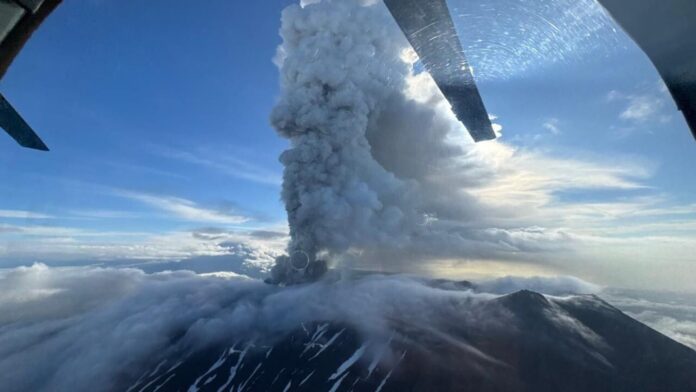The Krasheninnikov volcano on Russia’s eastern seaboard has erupted for the first time in more than five centuries, prompting authorities to issue an amber alert across the Kamchatka peninsula.
The eruption followed days of intense seismic activity in the region, including two major earthquakes within four days. The first quake, which struck on Wednesday, July 30, measured 8.8 on the Richter scale, making it one of the strongest recorded in history.
A second quake, measuring 6.8, hit on Sunday, August 3, just as the volcano began spewing lava for the first time in modern history.
Scientists from the Institute of Volcanology and Seismology confirmed the eruption, with plumes of ash now reaching an estimated 6,000 metres into the atmosphere. Authorities have warned that the ash cloud could disrupt flights across the northern Pacific.
Images released from the scene show dense columns of ash rising above the mountain as emergency officials prepare for possible evacuations in the sparsely populated area. Residents have been advised to gather essentials and be ready to move if the situation escalates.
While the exact date of the last eruption remains uncertain—estimates range from 450 to 600 years ago—records suggest the last documented activity occurred in the 15th century.
The Ministry of Emergency Situations also issued a tsunami advisory following the second underwater quake in the region, urging residents to move to higher ground despite projections of low wave heights.
Kamchatka sits on the Pacific Ring of Fire, a region prone to seismic activity, but volcanic eruptions of this magnitude are rare. Authorities say no tourist groups were in the vicinity of the volcano before the eruption, keeping the immediate threat to life minimal.

